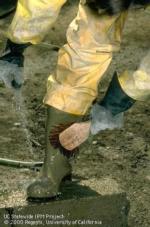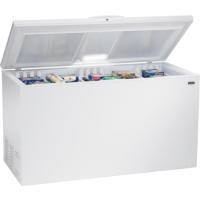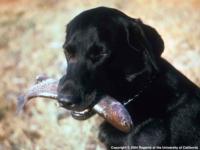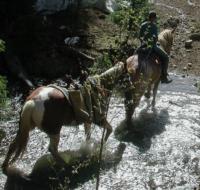Stop the Spread!
Plan your visit
Avoid going to two streams, lakes, or other water bodies the same day, to give you time to decontaminate your gear between sites. If you must visit multiple sites, plan your trips so that any sites known to be infested with AIS are visited LAST. Have multiple sets of footwear and gear available so that what you bring into a water body is clean.
How to Clean Your Boat
Boaters can help to stop the spread of invasive species to new areas by using the Boat Cleaning Procedures Checklist from California State Parks - Division of Boating & Waterways. It is important to cooperate with Boat Inspection and Decontamination Stations at lakes, marinas, and state borders.
Moving on foot: Decontaminate Boots, Waders, and Gear
In some cases, you may want to re-think your gear - less expensive rubber boots may break down faster, but can be easier to decontaminate. Decide what works best for you, but remember, the best gear in the world won't do you any good if the fish are gone due to the impacts of an invasive species.

Inspect your gear for any visible signs of AIS, including boot tread, laces and lace holes, and in and around any folds and flaps, but remember, it's easy to miss small animals and bits of plants. Scrub all gear with a stiff bristled brush on-site to remove visible signs of AIS as well as mud and bits of vegetation that may harbor them. Wear gloves and eye protection as needed.

Allow gear to dry thoroughly, preferably in full sun. Note that in some more humid areas that may not be possible, and even damp gear can spread AIS.
Clothing and some footwear can be thoroughly dried in a clothes dryer for 30 minutes at the high setting. Kayaks, float tubes, and waders must be thoroughly drained. We suggest a dry time of up to 5 days in warm dry conditions, and up to 30 days in more moist coastal areas.
Creels, wading socks, gaiters, vests, nets, flies, stringers, bobbers, and any other fishing tackle and gear that enters the water should be treated the same way - make sure to dry thoroughly, ideally in full sun, for several days.
If gear can't be dried, because of time limitations or humidity, then

In some situations, and with some gear, it may be more convenient and desirable to freeze your gear. After scrubbing on site, place potentially contaminated gear in a plastic bin or bag, and keep it separate from dry gear. Transport sealed bags or containers to a freezer, and freeze at 32o F (0oC) or colder for a minimum of 8 hours. After removing from the freezer, inspect again, and scrub or scrape any additional AIS, mud, or debris from gear. Once frozen, AIS, mud, and debris can be disposed of in the trash.
Stream teams, public works personnel, outfitters, guides, camps, fishing clubs, and others with the facilities to do so may want to consider investing in a chest freezer for this purpose.
Keep Pets from Spreading AIS

Carefully inspect your dog's paws and the lower parts of its coat for mud and bits of plant debris. Wash these off by scrubbing in the water body. Towel dry your dog's fur. For horses, check and remove mud from their hooves and around their shoes, and brush down their coat and mane. Long haired breeds will require more attention. To avoid spreading AIS, do not take your animals to more than one water body in a day.

